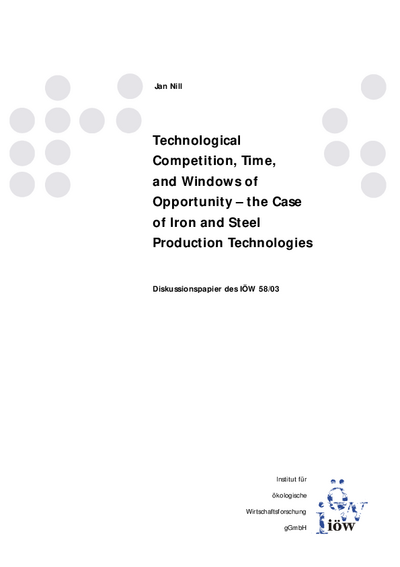Technological Competition, Time, and Windows of Opportunity The Case of Iron and Steel Production Technologies
This case study within the SUSTIME project analyses technological competition between iron- and steel-production technologies, steel production belonging to the most energy- and environment-intensive industrial activities. It shows that techno-economic time windows can be of relevance for competition between old and new technologies as well as between several new ones and clarifies some conditions. After the description of relevant technologies and a historical analysis of technological competition in steel production (between basic oxygen furnaces and electric arc furnaces), the analysis of old-new competition between the traditional blast furnace ironmaking technology and the new smelting reduction technology demonstrates that investment cycles and market entry barriers seem to be constituent for the time dependence of techno-economic windows. Given this importance of scale, such instable phases of competition can already be important before market introduction of the new solution takes place. An outlook on new-new competition between several new ironmaking technologies points out that even if direct network effects are absent, scale and learning effects may provide for pressure towards one dominant technology and thus the relevance of time windows. Finally, some implications for future climate policy are discussed.



